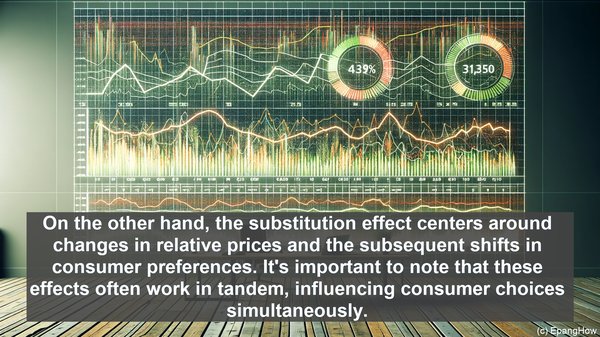Introduction: The Core of Consumer Choice Theory
Before delving into the intricacies of the income effect and substitution effect, let’s establish a foundational understanding of consumer choice theory. At its core, this theory aims to explain how individuals allocate their limited resources, such as income, to various goods and services. By comprehending the factors that influence consumer decisions, economists can gain insights into market dynamics and overall economic patterns.
The Income Effect: Changes in Purchasing Power
The income effect refers to the impact of a change in an individual’s income on their purchasing power. When a person’s income increases, their purchasing power rises, allowing them to buy more of a particular good or service. Conversely, a decrease in income reduces their purchasing power. This effect is often associated with normal goods, which are goods for which demand increases as income rises. For example, when someone’s income goes up, they may choose to buy a higher-quality product or increase the quantity of a certain item they purchase.

The Substitution Effect: Changes in Relative Prices
In contrast to the income effect, the substitution effect focuses on the impact of a change in the relative prices of goods or services. When the price of a particular item decreases, it becomes relatively more attractive compared to other goods in the market. As a result, consumers tend to substitute the now relatively cheaper good for others. This effect is particularly relevant for substitute goods, which are goods that can be used in place of each other. For instance, if the price of Brand A’s product decreases, consumers may switch from Brand B’s product to take advantage of the cost savings.
Differentiating the Effects: Income vs. Substitution
While both the income effect and substitution effect are outcomes of changes in economic factors, they have distinct implications. The income effect primarily relates to changes in purchasing power, driven by alterations in income. On the other hand, the substitution effect centers around changes in relative prices and the subsequent shifts in consumer preferences. It’s important to note that these effects often work in tandem, influencing consumer choices simultaneously. However, in certain scenarios, one effect may dominate over the other, leading to different outcomes.

Real-World Applications: Understanding Consumer Behavior
By comprehending the income effect and substitution effect, economists can gain valuable insights into consumer behavior. For instance, when analyzing the impact of a tax cut, understanding the income effect helps predict how consumers’ purchasing patterns may change. Similarly, when studying the introduction of a new product in the market, considering the substitution effect aids in assessing its potential success by examining its positioning relative to existing alternatives.
